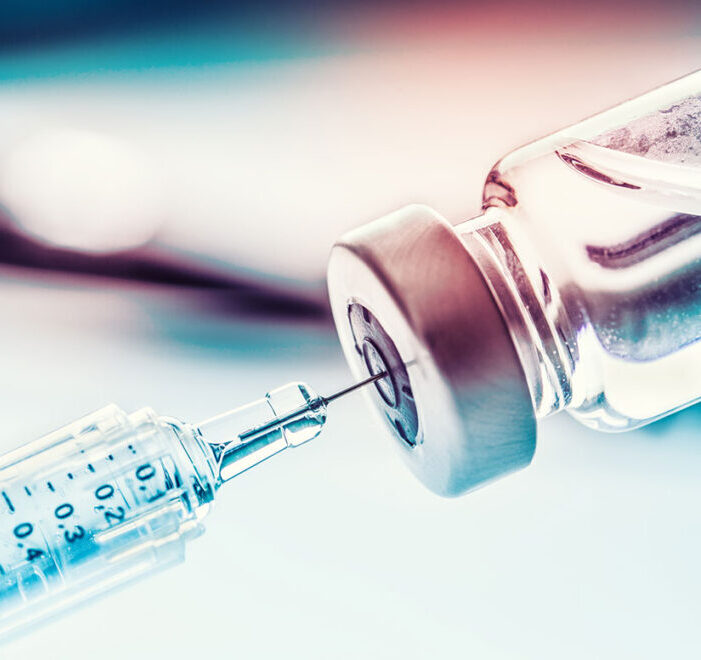CDC Updates SARS-CoV-2 Infection Control Guidance for Healthcare Settings, Including Testing Protocols for Nursing Homes
On September 10, the Centers for Disease Control and Prevention (CDC) updated recommendations related to SARS-CoV-2 infection control procedures in healthcare settings. These updates included streamlining several separate guidance documents into a single healthcare settings document and updating the nursing homes guidance document to include new recommendations on resident and staff testing. The Centers for Medicare and Medicaid Services (CMS) concurrently released memo QSO-20-38-NH REVISED to adopt these testing recommendations into nursing home guidance.
How to Use the CDC Guidance
CDC has consolidated several guidance documents and streamlined information into 3 main documents that healthcare providers should reference going forward. Interim Infection Prevention and Control Recommendations for Healthcare Personnel During the COVID-19 Pandemic will be the main source document for all healthcare settings and settings in which healthcare is provided. This includes settings such as retirement communities that do not provide care but where care is being provided through home health.
The Interim Infection Prevention and Control Recommendations to Prevent SARS-CoV-2 Spread in Nursing Homes continues to be the main source document for nursing homes and long-term care settings. This document links to other guidance from CDC and CMS as needed, including links to CDC recommendations for high risk exposures in healthcare personnel and CMS guidance on visitation and testing.
The Interim Guidance for Managing Healthcare Personnel with SARS-CoV-2 Infection or Exposure to SARS-CoV-2 will continue to be the main source document for management of healthcare personnel in all settings. This document includes information on when healthcare personnel should be excluded from work due to infection or exposure and when these healthcare personnel may return to work. This document also provides information on testing healthcare personnel with higher risk exposure.
What Has Changed
The updated guidance from CDC, supported and adopted by CMS, changes the way nursing homes conduct COVID-19 testing and how the nursing homes make other infection control decisions such as decisions about source control.
Nursing homes should now refer to COVID-19 Data Tracker (county view) for determinations on use of source control or frequency of routine screening testing for unvaccinated staff. These decisions will be based on levels of community transmission as identified through the COVID-19 Data Tracker and use of the tracker will replace the use of CMS data on county positivity rates. For more information on how to use the COVID-19 Data Tracker, see below “Using the COVID-19 Data Tracker”.
Testing in Response to Symptoms. No changes are recommended for testing residents and staff who show signs or symptoms of COVID-19 infection. Residents or staff showing signs or symptoms of COVID-19 should be tested immediately regardless of vaccination status. Staff should be restricted from work and residents should be restricted to their rooms and placed on transmission-based precautions pending evaluation for SARS-CoV-2 infection.
Testing in Response to Outbreak. Outbreak testing can now be conducted based on contact tracing. If a staff member tests positive or a new nursing home-onset case is identified among residents, the nursing home should begin an outbreak investigation in which close contacts within the nursing home are identified. Close contact means any resident who has been within 6 feet of a COVID-positive individual for a cumulative total of 15 minutes or more over a 24-hour period or any staff member who meets the definition of a high risk exposure as outlined in Interim Guidance for Managing Healthcare Personnel with SARS-CoV-2 Infection or Exposure to SARS-CoV-2.
According to the updated guidance and recommendations, nursing homes should test any close contacts immediately and every 5-7 days until all test negative and 14 days have passed since the last positive test. Unvaccinated residents and staff should quarantine / be restricted from work during testing. Fully vaccinated residents and staff and residents and staff who have had SARS-CoV-2 infection in the last 90 days do not need to quarantine / be restricted from work.
If nursing homes are unable to conduct contact tracing to identify close contacts, outbreak testing should be performed according to previous guidance where the nursing home tests all residents and staff, regardless of vaccination status, on the affected unit or area. If outbreak testing of close contacts or outbreak testing on the affected unit indicate that the outbreak is not contained, testing should continue on a nursing home-wide basis.
We note that at this time, no changes have been made to guidance on visitation during outbreak. Visitation is restricted for residents on transmission-based precautions due to infection or close contact. Outdoor visitation may occur for residents on an affected unit when an outbreak has been identified provided those individuals have not been identified as close contacts. Indoor visitation may continue for all other residents not on the affected unit and not on transmission-based precautions.
Routine Testing of Unvaccinated Staff. Routine screening testing of vaccinated staff continues to be required, though the process has been altered. As noted above, nursing homes will now determine the frequency of routine testing of unvaccinated staff based on community transmission rates obtained through the COVID-19 Data Tracker. Testing of unvaccinated staff based on community transmission rates will be conducted as follows:
- High (red) or substantial (orange) community transmission: test 2 times per week.
- Moderate (yellow) community transmission: test 1 time per week.
- Low (blue) community transmission: routine screening testing is not recommended.
Nursing homes will continue to monitor these rates and make adjustments to testing according to previous guidance. If the community transmission rate for a given week indicates a higher testing frequency than the nursing home has been testing, the nursing home will immediately increase testing frequency. If the community transmission rate for a given week indicates a lower testing frequency than the nursing home has been testing, the nursing home will continue testing at the higher frequency until the community transmission rate has remained steady at the lower transmission rate for a period of 2 weeks before decreasing testing frequency.
Fully vaccinated staff and staff who have had SARS-CoV-2 infection in the past 90 days are not recommended for routine screening testing at this time.
Using the COVID-19 Data Tracker
The COVID-19 Data Tracker contains 2 measures for determining community transmission: the total number of new cases per 100,000 people within the last 7 days, and percent positivity of screening and diagnostic nucleic acid amplification tests (NAATs) during the last 7 days. The data from these indicators translates into 4 categories of community transmission: low community transmission (blue), moderate community transmission (yellow), substantial community transmission (orange), and high community transmission (red).
When new cases and percent positivity each fall into separate community transmission categories, the higher category is used for determining infection control practices, such as source control and routine screening testing. For example, if new cases translates to substantial (orange) community transmission and percent positivity translates to moderate (yellow) community transmission, the nursing home would be subject to performing routine screening testing of unvaccinated staff according to substantial community transmission, two times per week.
What This Means for Members
While outbreak testing based on contact tracing will theoretically be a more efficient way to conduct testing, it is our understanding that routine screening testing of unvaccinated staff will generally increase with the transition from using county positivity rate to using community transmission rate for determination of testing frequency. We have heard concern from members in some locations about testing supply shortages. We have been advised that the US is ramping up testing production at this time and any shortages should be alleviated in the next month or so. That said, turn-around times for lab testing are dependent on volume and increased testing due to outbreak or community transmission may impact test turn-around times. Additionally, we have been informed that while HHS continues to supply point-of-care testing to nursing homes, these tests are meant to address routine staff screening testing needs and allocations may not accommodate testing that is being performed in response to an outbreak.
LeadingAge will continue to advocate on behalf of members and provide updates on any changes to guidance.

Most Recommended
October 15, 2025
 Shutdown Week Three: Impact of Ongoing Closure on Affordable Housing
Shutdown Week Three: Impact of Ongoing Closure on Affordable Housing
December 10, 2025
Fiscal Year (FY) Funding 2026
October 07, 2025
Immigrant Workforce Matching Program Brings Workforce Relief
Recently Added
December 18, 2025
HUD Delays HOTMA to 2027 for Multifamily Housing
December 17, 2025
 Colleagues on the Move, December 17, 2025
Colleagues on the Move, December 17, 2025
December 16, 2025



